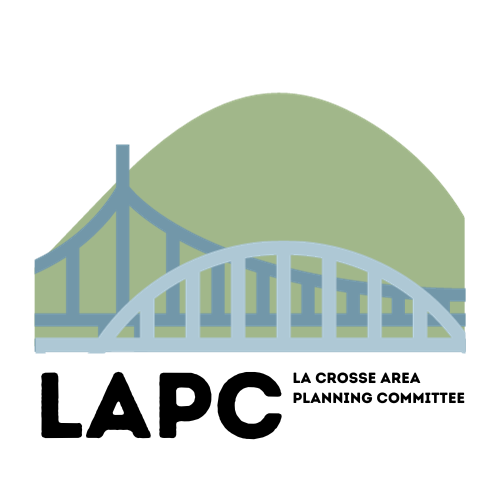-
HOW DO I
Apply For
Find
Pay
Water Testing

-
RESIDENTS
Health & Wellness
Senior & Assisted Living
Environment
Families & Individual Support
Financial Assistance
Library
Safety & Justice
Broadband

-
BUSINESS
Community Development
GIS Mapping
Ordinances
Requests For Proposals
Start A Business
Zoning, Planning & Land Information
Broadband

-
VISITORS
Campgrounds & Shelters
Downtown Guide
Hunting & Fishing
Parks/Facilities
Explore La Crosse

-
YOUR GOVERNMENT
County Board
Ordinances
Resolutions
Elections
Elected Officials
State
Facilities
Municipalities: Cities, Villages and Towns
- CITY OF LA CROSSE
- CITY OF ONALASKA
- TOWN OF BANGOR
- TOWN OF BARRE
- TOWN OF BURNS
- TOWN OF CAMPBELL
- TOWN OF FARMINGTON
- TOWN OF GREENFIELD
- TOWN OF HAMILTON
- TOWN OF HOLLAND
- TOWN OF MEDARY
- TOWN OF ONALASKA
- TOWN OF SHELBY
- TOWN OF WASHINGTON
- VILLAGE OF BANGOR
- VILLAGE OF HOLMEN
- VILLAGE OF ROCKLAND
- VILLAGE OF WEST SALEM
School Districts


Public Participation Plan

The La Crosse Area Planning Committee (LAPC) Public Participation Plan (PPP) is a policy document outlining the LAPC’s public input opportunities and process. It is updated at least every five years so as to incorporate new federal requirements, if applicable, and to adjust policies as needed based on changes in technologies and internal review of existing policies and their effectiveness.
The PPP has been updated to incorporate new federal regulations and requirements, additional criteria for TIP amendments, and more inclusive methods for informing and reaching out to the public. It was approved by the LAPC Policy Board on September 21, 2022.
Why We Need a Public Participation Plan - Federal Requirement
Beginning with the Intermodal Surface Transportation Efficiency Act (ISTEA) of 1991, metropolitan planning organizations (MPOs) are required to “develop and utilize a proactive public involvement process that provides complete information, timely public notice, full public access to key decisions, and supports early and continuing involvement of the public in developing metropolitan transportation plans and transportation improvement programs.” Subsequent transportation acts have expanded on the provisions to require extensive stakeholder participation above and beyond public involvement. The public participation plan provision expressed in the current Fixing America’s Surface Transportation (FAST) Act signed into law in 2015 requires MPOs to develop a participation plan in consultation with all interested parties and describe explicit procedures, strategies, and desired outcomes for:
- Providing adequate public notice;
- Providing timely notice and reasonable access to information;
- Employing visualization techniques to describe plans and programs;
- Making public information available in electronically accessible formats;
- Holding public meetings at convenient and accessible locations and times;
- Demonstrating explicit consideration and response to public input;
- Seeking out and considering the needs of those traditionally underserved by existing transportation systems;
- Providing an additional opportunity for public comment if the final metropolitan transportation plan (MTP) or transportation improvement program (TIP) differs significantly from the version made available for public comment;
- Coordinating with statewide processes; and,
- Reviewing the effectiveness of the participation plan.
© 2025 La Crosse County. All Rights Reserved.
